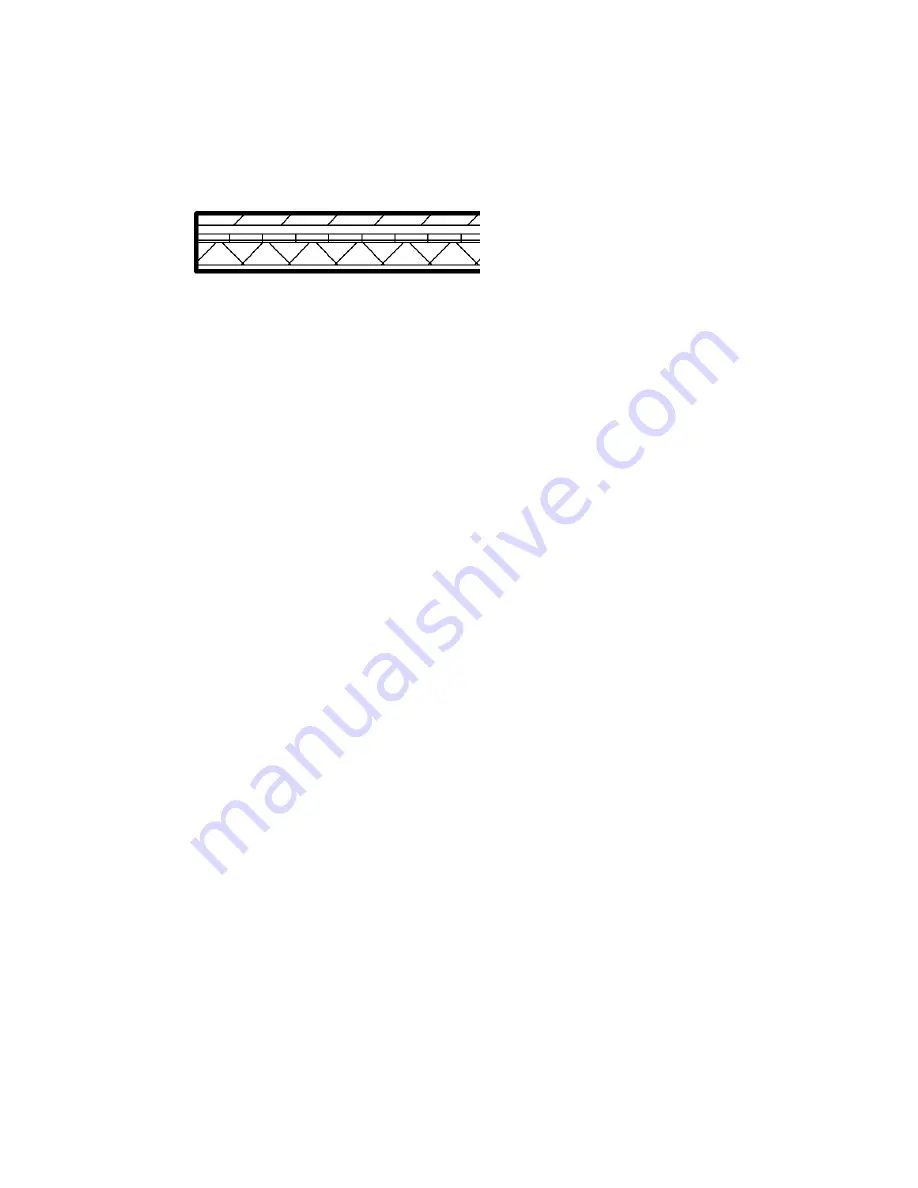
You can represent each layer by setting the layer's material, thickness, and function. You typically see
compound geometry in floor plans, reflected ceiling plans, and sections. They display in hidden line and
wireframe views. See
Hidden Line Model Graphics Style
on page 202 and
Wireframe Model Graphics Style
on page 201.
7-layer wall shown in plan view
Materials in Compound Geometry
Each layer in a compound structure is typically displayed with some type of material. For example, one layer
might be the air infiltration barrier, another is plywood, followed by a layer of wood. Revit Architecture has
several predefined materials, or you can create your own using the Materials command. See
Materials
on
page 459.
Layer Pattern Display
The material on layers displays with fill patterns. To see the fill pattern in a coarse-scale view, set the Coarse
Scale Fill Pattern and Coarse Scale Fill Color properties of the compound structure. To see the fill pattern in
a medium or fine detail level, change the Detail Level parameter of the View Properties to medium or fine.
See
View Properties
on page 210.
Layer Join Cleanup
Compound layer joins clean up only if the layers share the same material. For example, a compound floor
layer can join to a compound wall layer if both layers are drywall. If the layers do not clean up, then a solid
line appears between them in the join. See
Materials
on page 459.
Applying a Function to a Layer of a Compound Structure
You assign each layer a specific function so the layer can join to its corresponding functional layer. Layer
functions have an order of precedence.
Rules for Layer Joins
■
The structure layer has the highest priority, Priority 1.
■
Finish 2 has the lowest priority, Priority 5.
■
Revit Architecture connects high priority layers before connecting layers with the lowest priority.
For example, suppose that you join 2 compound walls. A layer in the first wall with Priority 1 joins to a
layer with Priority 1 in the second wall. That Priority 1 layer can pass through lower priority layers before
joining to the other Priority 1 layer. A layer with a lower priority cannot pass through a layer of equal
or higher priority.
The following illustration shows higher priority layers joining before lower priority layers. The Priority
1 CMU layer of the horizontal wall passes through all layers, until it reaches the Priority 1 stud layer of
Materials in Compound Geometry | 749
Summary of Contents for 24000-000000-9860 - Revit Architecture - PC
Page 1: ...Revit Architecture 2009 User s Guide April 2008 240A1 050000 PM02A ...
Page 4: ......
Page 56: ...18 ...
Page 116: ...78 Chapter 3 Revit Essentials ...
Page 172: ...134 Chapter 4 ProjectViews ...
Page 178: ...Schedule with Grid Lines Schedule with Grid Lines and an Outline 140 Chapter 4 ProjectViews ...
Page 554: ...516 ...
Page 739: ...Curtain wall Curtain Grid Curtain Walls Curtain Grids and Mullions 701 ...
Page 1004: ...966 ...
Page 1136: ...1098 ...
Page 1226: ...1188 ...
Page 1250: ...1212 ...
Page 1276: ...1238 Chapter 20 Design Options ...
Page 1310: ...1272 ...
Page 1366: ...1328 ...
Page 1406: ...1368 ...
















































